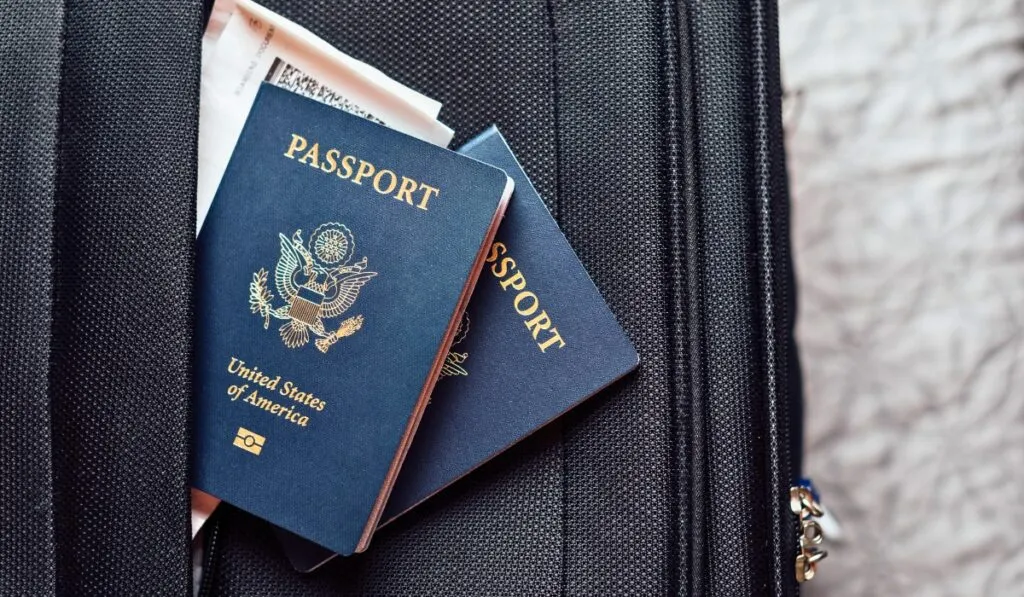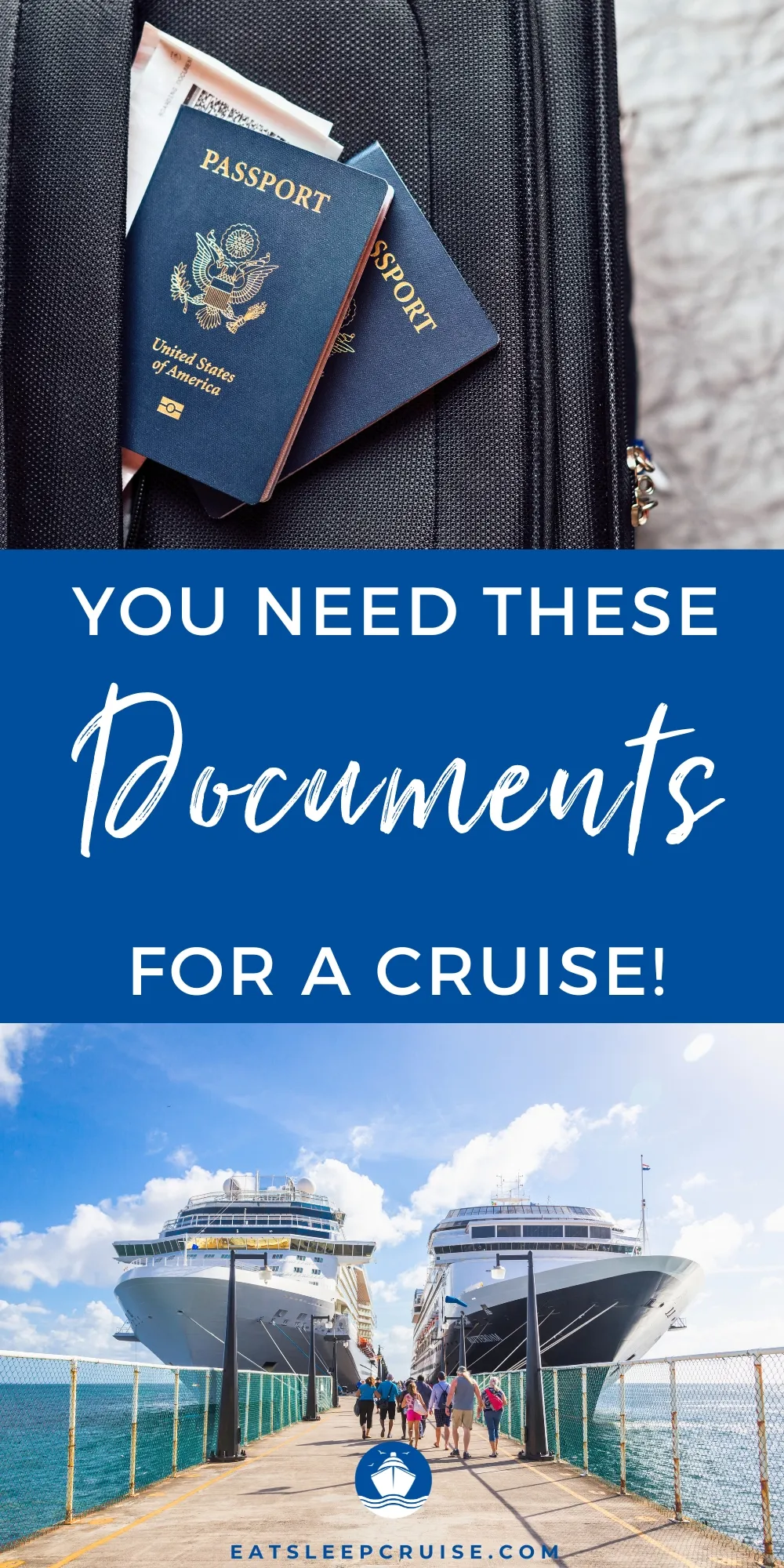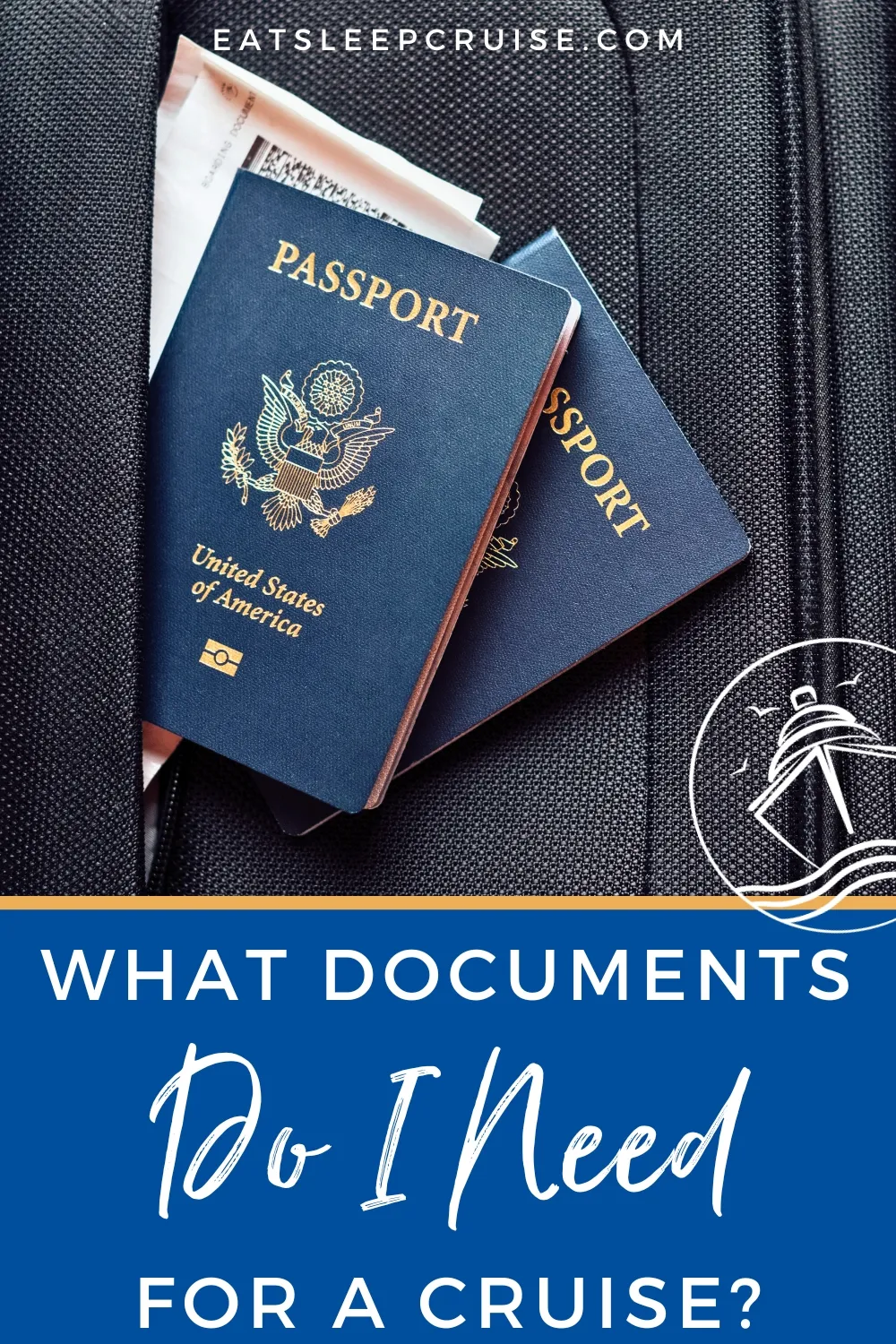Taking a cruise involves multiple countries, international waters, ships with (usually) lots of people and, as a result, several things to keep track of in terms of paperwork. When getting ready to head out on the high seas, it’s important that you know what documents you need for a cruise. From identification to insurance documents, boarding passes, and even luggage tags, we go over all of the documents you need for a cruise vacation.
What Documents Do You Need for a Cruise
Identification
For cruises from the United States that begin and end in the same port, in most cases you can use either your passport or your original birth certificate and a driver’s license to take a cruise. This can include cruises to Bermuda, the Bahamas and Caribbean, or Alaska.
If your cruise is any other circumstance, you’ll need a passport to sail. Your passport must be valid for at least six months past the last day of your voyage.

Boarding Pass
Many cruise lines now utilize electronic boarding passes via their mobile apps or don’t even require guests to have an official “boarding pass” for their cruise because the relevant information has already been filled out online.
However, for cruise lines that still require paper boarding passes, make sure you print them out and bring them along on embarkation day. The passes include your name, cabin number, boarding time, and other relevant information. If you have these in hand (in paper form or the app) and ready to go upon arrival to the terminal, the process towards getting on the ship will go that much quicker.
Luggage Tags
For any bags that you plan to leave with the porters at the terminal, you’ll need luggage tags from the cruise line. The cruise line will email them to you prior to the cruise and/or you can find them in your account on the cruise line’s website once you’ve completed your check-in requirements. They already include your name and stateroom number; all you have to do is print them and attach them to your luggage.
To prevent cruise luggage tags from being accidentally ruined or ripped off in the transit process from the terminal to the ship, many cruisers purchase clear luggage tag holders specifically made for cruising. Another option is to cover them completely in clear packing tape before stapling them to your suitcase handles. If you’re flying to your homeport city, make sure you attach these tags to your luggage after you’ve arrived into town. You don’t want the tags to go missing at the airport.

Health Form
Prior to sailing, many cruise lines will require you to fill out a short health questionnaire. You can usually do this on the cruise line’s app a day or two before the sailing but can also do it at the terminal before boarding. While in the past this was usually a physical paper, now cruisers can predominantly complete this electronically.
The questionnaire usually has questions pertaining to symptoms associated with respiratory and gastrointestinal illnesses, as well as pregnancy. If you do have symptoms, a doctor will evaluate you at the terminal to assess whether or not you can board.
Further, some cruises may include port calls at destinations that have vaccination requirements for visitors. If your voyage is one of the rare ones that does, you should bring proof of your inoculation to the terminal on embarkation day as well.
Visas (if necessary)
Some destinations on a cruise itinerary may require guests to get a visa or further documentation than is standard (such as a passport) to visit. Though this is not common and isn’t required on the vast majority of cruises around the world, you need to know when it is required and then apply for and fill out the necessary forms accordingly.
If you need a visa or other entry form, your cruise line should let you know. Some cruise lines even take care of these procedures for guests, taking extra legwork off your plate.
If you’re headed out on this sort of itinerary, make sure to check the entry requirements for those countries and do what’s necessary before sailing. If you don’t, it may not be as simple as staying on the ship in that port; you likely will be denied boarding the cruise entirely.

Special Permissions
Some circumstances may require you to obtain special permission to travel. For example, if you’re cruising with someone else’s kids and neither of their parents are joining, you’ll need a notarized letter from a parent that says you are allowed to take them out of the country.
If you’re pregnant, many cruise lines require that you bring along a note from your doctor verifying your due date and that you’re fit for travel. You must be under 24 weeks pregnant to cruise.
Other Paperwork You Should Consider Bringing
Travel Insurance Paperwork
If you’ve purchased travel insurance for your cruise (and we highly recommend you do!), you’ll want to carry along a copy of your policy details. In the unlikely case of an emergency, this will show you exactly what your policy does and doesn’t cover. It can also serve as proof that you have travel insurance if asked. It will include the insurance company’s phone number if you need it at any time during the trip as well.
Medical Documents
In the same vein as health insurance documents, you may want to travel with other documents related to medication or medical conditions you have. These could include copies of your prescriptions and proof of vaccinations if you need them for any destinations along your route.
You might also consider making a list of any chronic health conditions you have so it’s easy for medical personnel to know as much information as possible to help you in case of a medical emergency.

List of Contact Information
Though the cruise line requires you to list an emergency contact in their records prior to the cruise, it’s a good idea to bring your own list of contact information as well. It can include close family members’ names and phone numbers in case of an emergency, as well as other numbers you may want to have on hand like your doctor, bank, and credit card company.
If you’re visiting countries where the emergency number is not 911, it’s also a good idea to make a note in your phone of what the emergency numbers are in those countries in case you need them while ashore.
ID Photocopy
Make photocopies of whatever forms of ID you’re bringing with you on your cruise. This means your passport and/or driver’s license and birth certificate. You might also want to photocopy your main credit card(s) as well.
If you leave your passport on the ship during port calls (which we recommend), bring along your photocopy when you debark. The copies can’t replace the real things, but they can potentially help you in a pinch — including possibly speeding up the process if you need to replace something.
Packing List
You may be wondering why I’d suggest bringing along your packing list if you’ve already packed and are headed out on your trip. Here’s why: many travelers suggest bringing along your packing list to help you remember everything you need to pack back up once your trip is over.
I don’t personally do this because I’m very good about thoroughly checking my cruise cabins and hotel rooms before leaving and don’t feel the need to use a checklist to pack back up, but it’s a very helpful tool for some.
How to Organize and Keep Track of Your Cruise Documents
To keep your travel documents organized, put them into a pocket folder or manila envelope. If you have a lot of extra documents due to things like special permissions or medical paperwork, you may want to divide them into two folders.
When boarding the ship, make sure to keep all of this paperwork with you in your carry-on bag; don’t put it in any luggage that you will hand off to the porters at the terminal.
Comments
Did you find our guide to what documents do you need for a cruise helpful? Do you have anything else to add to this list? Drop us an anchor below to share what documents you always take while traveling.










Be the first one to post comment